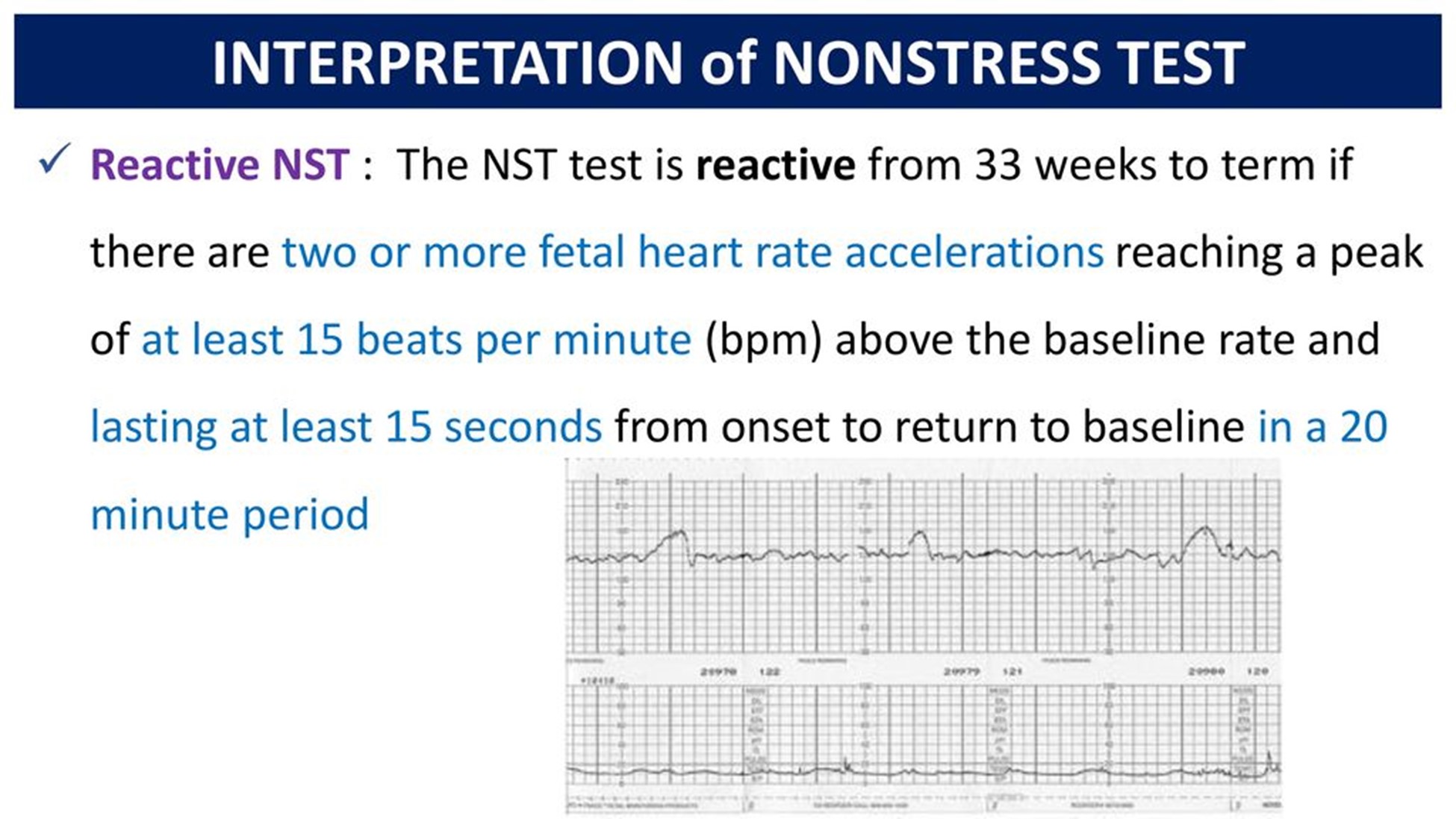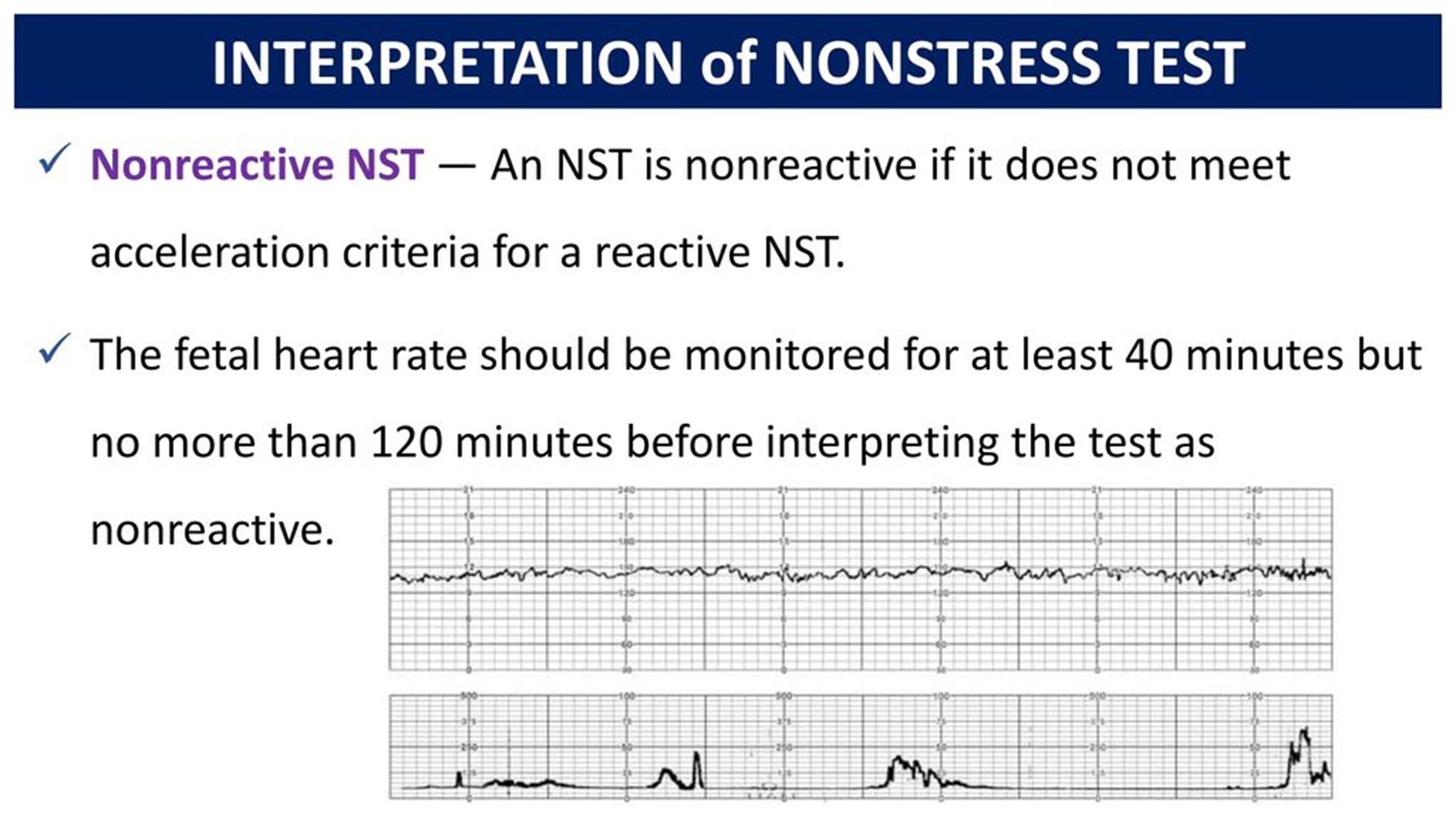Diagnostic Criteria and Investigations
Diagnostic Criteria and Investigations ( 16 Questions)
A nurse is performing a non-stress test (NST) for a client who is 34 weeks pregnant and has pre-eclampsia.
Which of the following fetal heart rate patterns indicates a reactive test?
Two or more accelerations of at least 15 beats/min above baseline lasting for at least 15 seconds in a 20-minute period. This indicates a reactive test, which means that the fetus is well oxygenated and not in distress.

No accelerations or decelerations in a 20-minute period indicate a non-reactive test, which may suggest fetal hypoxia or acidosis.
One acceleration of at least 10 beats/min above baseline lasting for at least 10 seconds in a 20-minute period is the criterion for a reactive test for gestational age less than 32 weeks, not 34 weeks.
Variable decelerations with normal variability in a 20-minute period indicate cord compression or fetal head compression, not a reactive test.
Two or more accelerations of at least 15 beats/min above baseline lasting for at least 15 seconds in a 20-minute period. This indicates a reactive test, which means that the fetus is well oxygenated and not in distress.

Choice B is wrong because no accelerations or decelerations in a 20-minute period indicate a non-reactive test, which may suggest fetal hypoxia or acidosis.
Choice C is wrong because one acceleration of at least 10 beats/min above baseline lasting for at least 10 seconds in a 20-minute period is the criterion for a reactive test for gestational age less than 32 weeks, not 34 weeks.
Choice D is wrong because variable decelerations with normal variability in a 20-minute period indicate cord compression or fetal head compression, not a reactive test.

